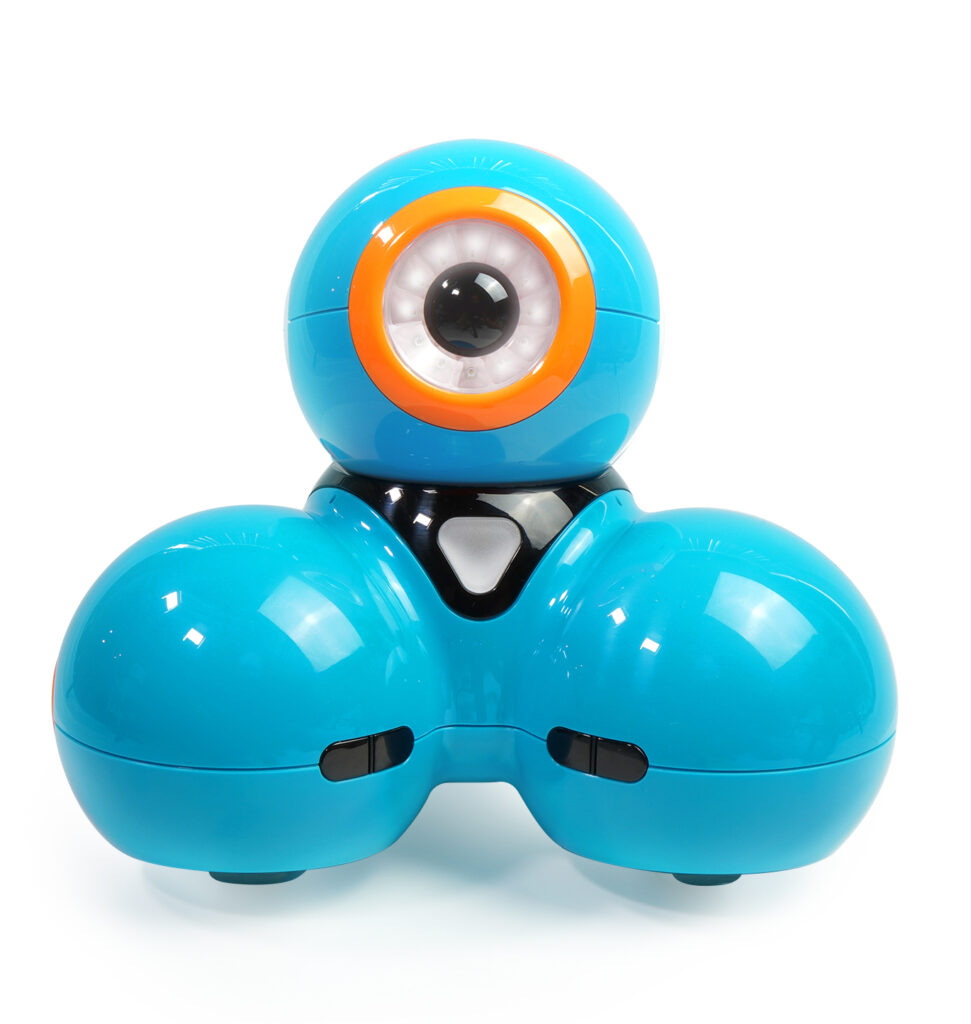A good STEM robot does more than introduce kids to technology—it equips them with the critical thinking, problem-solving, and creativity skills they need to succeed in a constantly changing world.
There are plenty of robots on the market, which is fantastic—it means more people are recognizing their value. But with so many options, it can be tough to decide which one will actually support your child’s learning.
Two popular choices, Dash and Miko 3, offer very different experiences. Unlike Miko robots, which focus on conversational AI and screen-based interaction, Dash offers a hands-on, STEM-centered experience that grows with kids and makes learning tangible, engaging, and fun.
In this post, we’ll compare the two options and break down why Dash is the standout choice for parents looking to inspire their children to become future-ready innovators.
Dash vs. Miko 3 Comparison
 Dash Robot
Dash Robot
|
|
|
|---|---|---|
| Price | $158.99 (includes everything needed to learn and play) | $149.00 (Miko Max subscription is an added $14.99/month) |
| Primary Purpose | STEM learning and innovation | Interactive AI |
| Learning Style | Hands-on, interactive coding and robotics | Screen-based learning and dialogue |
| Connectivity | Bluetooth; works offline | Requires WiFi |
| Access to Features | All-inclusive, no paid subscription needed | Paid subscription needed to access full range of features and branded content |
| Adaptability | Grows with kids from beginner to advanced | Best for younger kids; limited scalability |
| Setup | Ready to go out of the box; assembled and charged on arrival | Mixed reviews on setup ease |
| Amazon Reviews |
|
|
All-Inclusive vs. Subscription-Based
Dash provides everything kids need to start learning immediately, with no extra paid subscriptions or add-ons required. Dash pairs with a suite of free, easy-to-use apps that make it easy for kids to hit the ground running, no matter their level of experience. Dash even arrives fully assembled and charged!
Miko’s subscription, Max, often described by users as essential for the full experience and required to gain access to branded content, presents a potential ongoing cost for parents. Reviews also mention that setting up and charging Miko 3 is time consuming and must be done by the parent.
Wonder Workshop’s free Blockly app contains dozens of free coding puzzles that teach core coding concepts like sequences and loops. And Wonder Workshop’s free Wonder App contains over 300 puzzles and there’s even a free, kid-facing website, play.makewonder.com, that is, in part, devoted to helping kids navigate through the Wonder App challenges.

Interactive STEM Learning vs. Conversational AI
Dash offers a hands-on approach to STEM, allowing kids to see their ideas come to life. Instead of consuming content, kids are equipped with coding knowledge and tools to explore, actively controlling Dash’s movements, lights, and sounds using the free apps. It’s not just about coding; it’s about teaching kids how to think critically, work collaboratively, build resilience, and solve problems creatively.
While Miko 3 can introduce kids to conversational AI and digital interaction, it is more suited for video-based learning and general entertainment. Miko 3 does not have an emphasis on the foundational STEM skills that make Dash a robust educational tool.
Toy for Life vs. Toy for a Season
Dash evolves with your child’s skills, offering beginner-friendly drag-and-drop coding as well as advanced programming for older kids. This adaptability ensures that Dash remains engaging and challenging as kids grow.
Miko 3, on the other hand, is primarily geared toward younger children and doesn’t scale as effectively when it comes to learning complex STEM skills.
What Do the Experts Say?
Obviously, we’re biased, so check out the expert-curated STEM toy lists that consistently recommend Dash:
- Wirecutter: Featured as one of the best robots for its versatility, adaptability, and strong appeal to kids from kindergarten to upper elementary grades.
- Tom’s Hardware: “Top STEM kit pick for teaching younger kids (even ones who can’t read yet) to code.”
- Parents.com: Rated “Best Multifunctional Robot”
- Wired.com: “Successfully combines play and learning in a way that every STEM toy aims for but many fall short of.”
- Tech Crunch: Featured as an excellent tool to extend learning beyond the classroom.
- Code Wizards HQ: “A great introduction to skills that will help kids on their coding journey!”
- Popular Mechanics: Ranked among the best robot toys for kids, highlighting Dash’s ability to make STEM learning fun and engaging.
For over 10 years, educators, parents, and STEM experts around the world have celebrated Dash’s ability to blend learning and play seamlessly. Additionally, Dash is supported by research and case studies that show its impact on coding and problem-solving skills.
The Verdict
Both Dash and Miko 3 offer unique experiences for kids. Miko 3 functions well as a conversational companion, ideal for families looking for a kid-friendly introduction to interacting with an AI.
Dash goes a step further by turning STEM concepts into hands-on exploration, making it the clear choice for parents who want their kids to learn future-ready skills and build a lifelong love of learning and STEM.
Check out current promotions for the best deal on a truly out-of-the-box learning experience.
Get Dash for $148.99 for a limited time. Sale ends Dec. 16.
Order by Dec. 17 to get it in time for Christmas in the US.

















